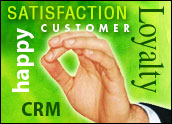
“A status report of all the different marketing activities you were engaged in might have sufficed in the past,” says Kevin Doohan, director of interactive marketing at ConAgra Foods. “But now we have to show what business results those activities are driving.”
When it comes to social media ROI (return on investment), suitable performance metrics have proven to be somewhat elusive. In fact, according to survey data for the new Aberdeen benchmark report, “Social Media Marketing: The Latest Buzz on Word of Mouth,” more than one-third (34 percent) of all companies indicated that a primary reason that they don’t currently engage in social media marketing activities is because they lack suitable performance metrics for evaluating the results.
Various Metrics
Companies that do engage in social media marketing activities tend to use a variety of non-financial performance metrics to track and measure progress. According to Aberdeen research, the most commonly used metrics include increases in brand awareness, which can be determined through related studies, and increases in customer engagement, usually calculated in terms of click-throughs, opt-ins, content downloads, registrations and various other calls to action.
Brand advocacy / “likelihood to recommend” ranks as another top metric companies have adopted to measure the success of their social media marketing activities. The Net Promoter Score (NPS), established by Bain & Company in 2003, has become the industry standard measure of word of mouth advocacy. The score is calculated by simply asking consumers on a scale of 1 to 10 their likelihood to recommend a specific company or brand. The score is the percentage of respondents highly likely to recommend (answering 9 or 10) minus those less likely to recommend (scoring 0 to 6). Similar to NPS is the Customer Focused Insight Quotient (CFiq), which was developed by IBM’s Institute for Business Value.
Traditional metrics that revolve around customer acquisition, retention and profitability also come into play. In addition, some companies use return on marketing investment (ROMI) to measure success. While a critical metric in terms of cost-justification, the challenge with social media monitoring and marketing is that the returns don’t always manifest themselves in a timely or linear fashion, making it difficult to draw a causal relationship between activities and results.
Further Refinement
Social media-specific scores that go beyond simplistic constructs such as the ratio of positive to negative buzz are gathering steam, and some hold a lot of promise. A good example is the Brand Advocacy Quotient (BAQ), a score introduced by Nielsen Online based on the thinking that consumer advocacy and brand growth share a symbiotic relationship. The score, which is still in development, aims to combine consumer-generated media activity, Web site activity and survey-based data with Nielsen’s so-called MegaPanel to determine whether consumers are promoting or eroding brands.
Also gaining traction is the Online Promoter Score (OPS), a methodology created by MotiveQuest. According to CMO Tom O’Brien, OPS can draw a direct correlation between online advocacy and sales. “The Online Promoter Score is a naturally observed measure of brand advocacy,” says O’Brien. “The power of OPS is that it is an observation of brand advocacy in the wild. People recommending things to each other in online conversations. There is no survey, no prompting. While an online measure, we think it is a great barometer of brand health — online recommendations are the result of a person’s sum total experience with a brand — not their online experience with a brand.”
A different set of metrics apply when it comes to using social media to identify and reduce risk. Online brand reputation protection means alerting companies to incidents that could impact their financial performance or put their customers, employees or other assets at risk. In this context, metrics around time-to-information and time-to-action are more applicable. The ability to avert or lessen the impact of even one harmful incident may readily justify the investment in social media monitoring as an early warning system.
In the end, there are myriad ways to measure ROI in social media. Not all of them are equally compelling or valid, and many companies still struggle to justify their expenditures related to social media and demonstrate business outcomes that ultimately translate into dollars and cents. Both the Brand Advocacy Quotient and the Online Promoter Score are promising developments in that direction, given the focus on correlating online conversation to financial outcomes, including increased shareholder value. The scores are likely to grow in popularity over time. Why? Because when it comes to measuring the results of marketing activities, including those related to social media monitoring and / or marketing, nothing speaks louder than money.
Jeff Zabin is a research fellow at the Aberdeen Group. He can be reached at [email protected].























































Another tool to measure social media was recently launched by Vitrue. It’s called the Vitrue Social Media Index. It’s free and simple, not meant to dive deep in the weeds, but rather a simple snapshot of the overwhelming AM ount of data…
http://vitrue.com/smi
Disclosure: I work on this product at Vitrue.
Will check this out. I don’t see nor feel the need for something concrete but companies even mine, sure do need the metrics or will dump social media out the window.
Not everyone can afford long term values.
Best.
Alain Yap
Morph Labs